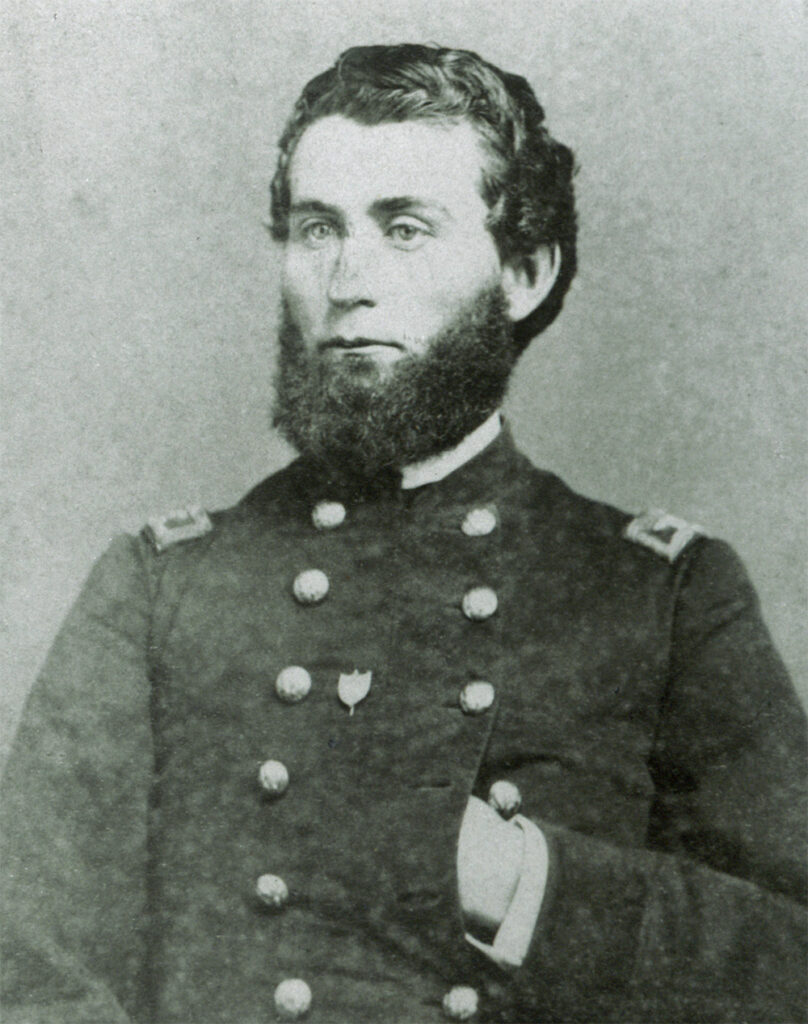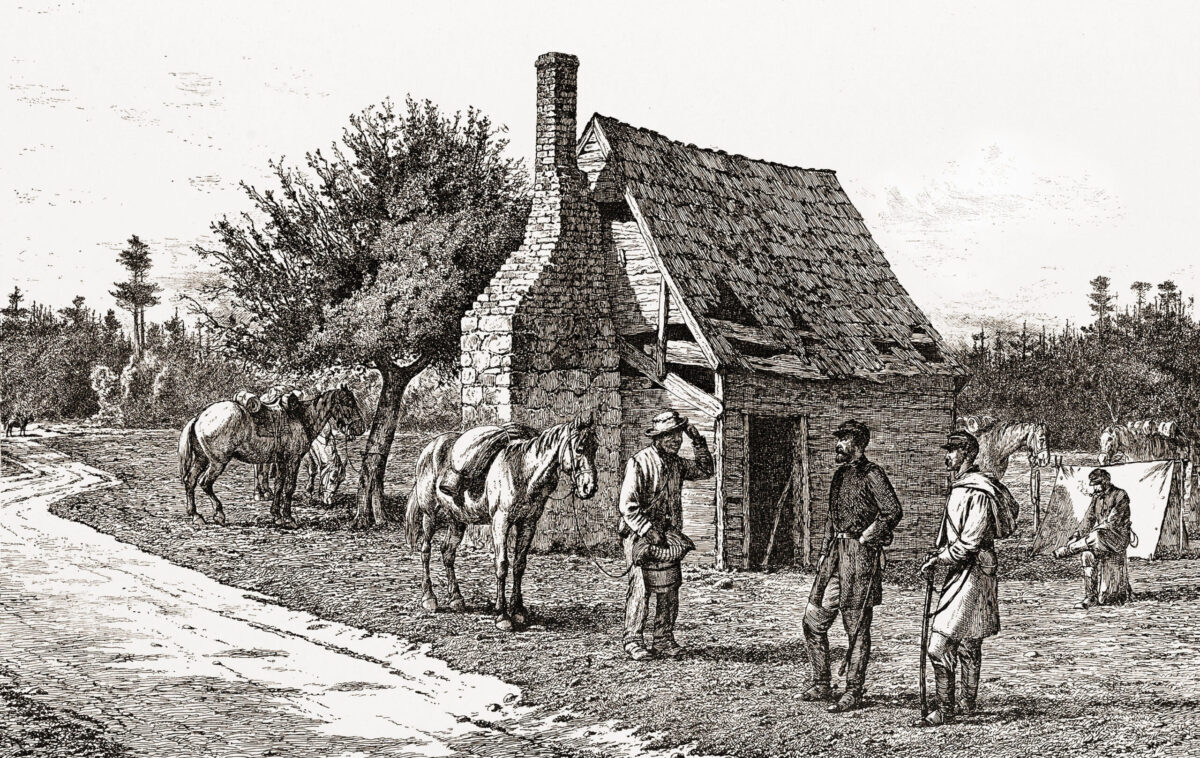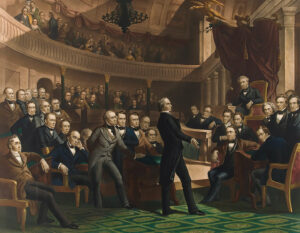In November 1862, Marcus Thompson escaped from a farm in Mount Sterling, Ky., to a nearby Union military camp commanded by Colonel Smith D. Atkins of the 92nd Illinois Infantry. Along with 29 other enslaved men, women, and children, Marcus had been farming the fields of a wealthy estate known for its corn and butter production, owned by the elderly Mary Thompson, who, it was clear, was not prepared to accept Marcus’ flight to freedom and teamed with her neighbors in suing Colonel Atkins. The lawsuit would test the legal bounds of emancipation through the military.
A year earlier Atkins, an antebellum lawyer, had abruptly departed in the middle of a criminal case in Freeport, Ill., to answer President Abraham Lincoln’s call for troops after the firing on Fort Sumter. The newly minted state attorney, who worked intermittently as a local newspaper editor, had passed the bar five years earlier.
Energized by the potential of the fledgling Republican Party, Atkins had actively campaigned for Lincoln in 1860. Not all Unionists agreed on the fate of slavery, of course, but Atkins was a fierce abolitionist, believing that emancipation would finally fulfill promises of national equality by the Founding Fathers. In a speech condemning the Supreme Court’s 1857 Dred Scott decision, Atkins posited that warfare would be the only solution to secure a truly free nation.
Fugitive slaves were a particular concern in Kentucky, bordered to the north by the free states of Ohio, Illinois, and Indiana. Numerous state and federal laws criminalized slave flight and prohibited people from aiding and concealing runaways. Under various property laws, slave owners could sue antislavery reformers, and Underground Railroad conductors were often accused of stealing their “property.”
When war erupted in April 1861, Kentucky remained in the Union, and many politicians cited the Constitution’s “Fugitive Slave” clause as a key condition for it. Slaves nevertheless used familiar escape routes and Underground Railroad networks to abscond to Union fortifications. Seizing upon that, the U.S. government passed legislation in 1861-62 freeing fugitive slaves who made it to Army outposts. If the Confederacy considered slaves property, Congress would reason, the U.S. military had the authority over their slaves as contrabands of war.
Even though Congress granted emancipation to all Confederate “contrabands,” the policy threatened to reinforce the controversial interpretation of the enslaved as “property.” This proved especially difficult to navigate in Kentucky. The state had not seceded, and federal authority to invoke the contraband policy in Union territory, at the expense of loyal citizens, remained in question.
The November 1862 conflagration involving Atkins actually was ignited by a Union captain who complained to Maj. Gen. Gordon Granger about three slaves hiding within the 92nd Illinois’ lines. Those slaves—Cyrus, Henry, and Mosely—purportedly belonged to the Union captain’s uncle, Charles Gilkey.

Upon inquiry, Atkins declared he would not release any enslaved person against his or her will, which spurred Gilkey, Mary Thompson, and nearly a dozen other neighbors to retain the prestigious Robertson law firm to bring lawsuits against Atkins. On November 19, backed by armed townspeople, the Mount Sterling sheriff served a summons and “order for delivery of property” against Atkins in an attempt to forcibly remove Marcus Thompson—as well as Cyrus, Henry, Mosely, and a number of other slaves, ages 18 to 27—from the camp.
Fayette Circuit Court.
Mary Thompson
against } Order for Delivery of Property
Smith D. Atkins
The Commonwealth of Kentucky, to the Sheriff of Fayette County: YOU are commanded to take the slave Marcus, copper color & 27 years old & medium size, and of the value of Eight Hundred Dollars, from the possession of the Defendant Smith D. Atkins, and deliver him to the Plaintiff, Mary Thompson, upon her giving the Bond required by law: and you will make due return of this order on the 1st day of the next February Term of the Fayette Circuit Court.
Witness: Jno B. Norton, Clerk of said Court, this 18 day of Nov, 1862
Executed Nov 19th 1862 by delivering to S.D. Atkins a true copy of the within order of delivery and demanding of him the slave Marcus. Said Atkins denied that he had possession of said slave but when charged that he was concealed in the 92 Regt of Illinois vol Infantry USA of which said Atkins is Colonel he did not deny the fact but stated that No officer of the law or other person should search for or take from the camp of his regiment this or any other slave. If attempted the officer would be shot. With the posse the Sheriff was able to summon it was impossible to get possession of or search for said slave.
C.S. Bodley S.F.C.
The plaintiffs made sure to frame their suits around property loss, complete with appraised monetary value for each man, naming Atkins as the thief. The petitions demanded immediate repossession and damages, or, if the sheriff could detain them, judgment for the enslaved men’s value. Although the court ordered Atkins to answer the petition, he refused, which spawned affidavits demanding his compliance. The colonel continued to stand firm, however. In turn, a jury awarded Mary Thompson $625, with an additional $25 in damages. Her fellow plaintiffs secured similar judgments, some as high as $800 per slave, with damages as high as $50.
The judgments totaled more than $12,000, and Atkins feared his property in Illinois could be auctioned off by a court ruling while he was away fighting. Leaving Kentucky later in the war did not end Atkins’ legal troubles either. In August 1864, he was charged with “slave harboring,” by the state’s Montgomery Circuit Court, a judgment carrying a possible sentence of 2–20 years. Despite the indictment, Atkins was never arrested.
The January 1863 Emancipation Proclamation authorized the recruitment of African Americans in the U.S. military. Kentucky and four other border states were exempted from the proclamation’s stipulation that all slaves in Confederate territory were to be freed.
The 92nd Illinois took part in the June-July 1863 Tullahoma Campaign, and Atkins commanded a cavalry brigade during the 1864 March to the Sea and then oversaw the surrender of Chapel Hill, N.C., in April 1865. He ended the war a brevet brigadier general.
In May 1864, Marcus Thompson—still legally a fugitive slave according to Kentucky—enlisted in the 15th USCT, serving until 1866. From 1867 to 1872, he served with the 9th U.S. Cavalry, a famed “Buffalo Soldier” regiment, in Fort Stockton, Texas. Upon his death, he received a military burial in Austin.
Daniele Celano, a Jefferson Scholars Foundation fellow, is a history Ph.D. candidate at the University of Virginia.






